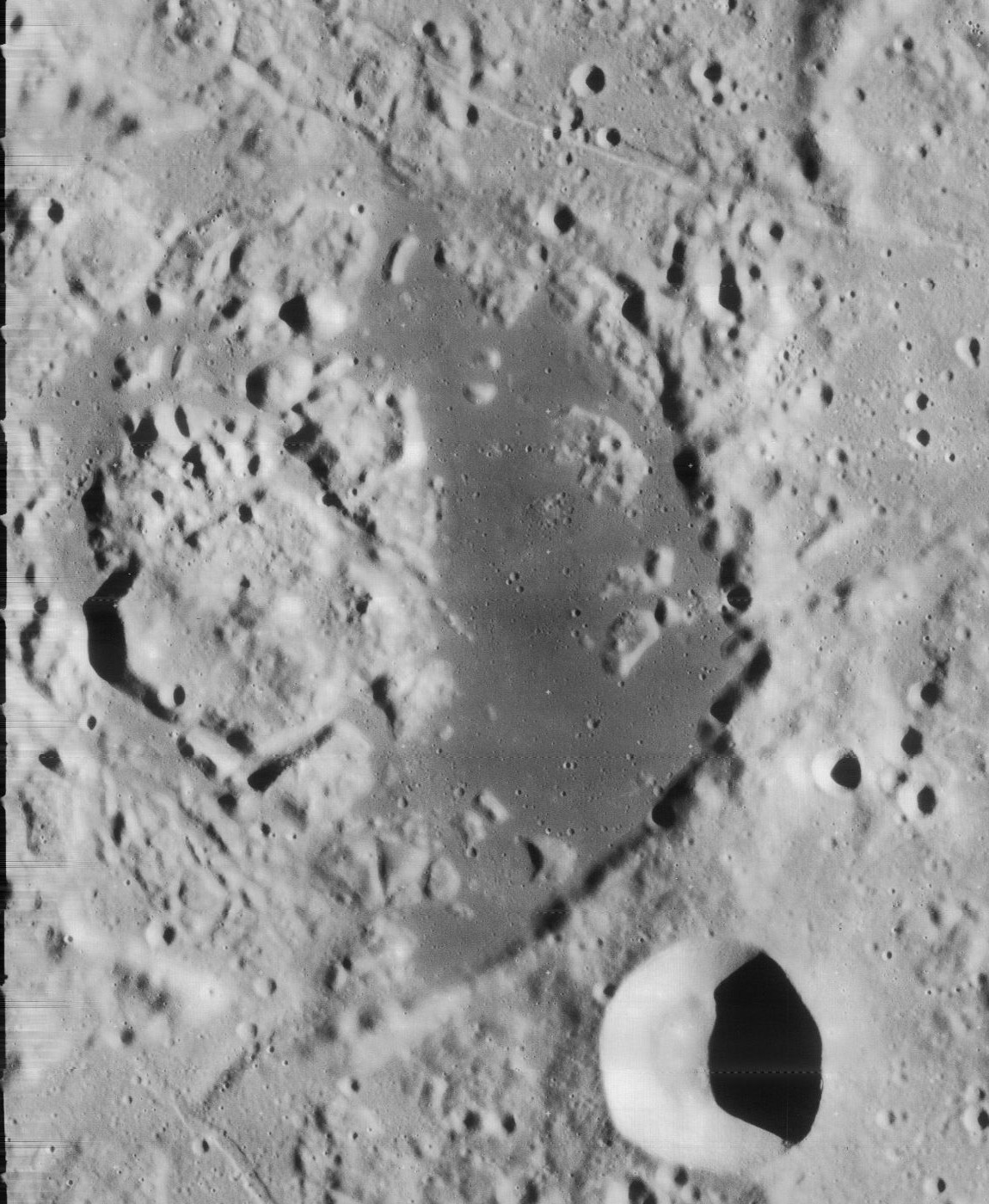Gerard (crater) on:
[Wikipedia]
[Google]
[Amazon]
Gerard is a lunar
online
 By convention these features are identified on lunar maps by placing the letter on the side of the crater midpoint that is closest to Gerard.
By convention these features are identified on lunar maps by placing the letter on the side of the crater midpoint that is closest to Gerard.
impact crater
An impact crater is a depression (geology), depression in the surface of a solid astronomical body formed by the hypervelocity impact event, impact of a smaller object. In contrast to volcanic craters, which result from explosion or internal c ...
that lies along the western edge of the Oceanus Procellarum
Oceanus Procellarum ( ; from ) is a vast lunar mare on the western edge of the near side of the Moon. It is the only one of the lunar maria to be called an "Oceanus" (ocean), due to its size: Oceanus Procellarum is the largest of the maria ("s ...
near the northwest limb of the Moon
The Moon is Earth's only natural satellite. It Orbit of the Moon, orbits around Earth at Lunar distance, an average distance of (; about 30 times Earth diameter, Earth's diameter). The Moon rotation, rotates, with a rotation period (lunar ...
's near side. It is located to the north-northwest of the crater von Braun, and northeast of Bunsen. Because of its location, Gerard appears strongly foreshortened when viewed from the Earth
Earth is the third planet from the Sun and the only astronomical object known to Planetary habitability, harbor life. This is enabled by Earth being an ocean world, the only one in the Solar System sustaining liquid surface water. Almost all ...
, hindering observation.
This is a worn and eroded formation with a rim that has been nearly obliterated in some locations and distorted in others. The northern half of the rim has outward bulges to the northeast, north, and northwest. The interior floor is rough in places, with several small and tiny craters along the floor and the eastern rim.
To the northwest of this formation is the unusual Gerard Q Inner (eastern floor covered in dark-hue
In color theory, hue is one of the properties (called color appearance parameters) of a color, defined in the CIECAM02 model as "the degree to which a stimulus can be described as similar to or different from stimuli that are described as ...
d basalt
Basalt (; ) is an aphanite, aphanitic (fine-grained) extrusive igneous rock formed from the rapid cooling of low-viscosity lava rich in magnesium and iron (mafic lava) exposed at or very near the planetary surface, surface of a terrestrial ...
ic lava
Lava is molten or partially molten rock (magma) that has been expelled from the interior of a terrestrial planet (such as Earth) or a Natural satellite, moon onto its surface. Lava may be erupted at a volcano or through a Fissure vent, fractu ...
) within the larger Gerard Q Outer, and a system of rille
Rille (German for 'groove') is typically used to describe any of the long, narrow depressions in the surface of the Moon that resemble channels. The Latin term is ''rima'', plural ''rimae''. Typically, a rille can be several kilometers w ...
s named the Rimae Gerard. These extend for a distance of about 100 kilometers. Like many craters in this region of the moon (such as Von Braun and Bunsen), the floor of Gerard Q Inner is fractured.The geologic history of the Moon, 1987, Wilhelms, Don E.; with sections by McCauley, John F.; Trask, Newell J. USGS Professional Paper: 1348.online
Satellite craters
 By convention these features are identified on lunar maps by placing the letter on the side of the crater midpoint that is closest to Gerard.
By convention these features are identified on lunar maps by placing the letter on the side of the crater midpoint that is closest to Gerard.
References
* * * * * * * * * * * * {{refend Impact craters on the Moon